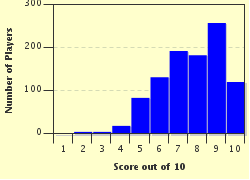Quiz Answer Key and Fun Facts
1. The world's largest coral reef system lies off the northeast coast of Queensland, in the Coral Sea. You will want to bring along your scuba diving gear when you visit which of these tourist hot spots?
2. Travelling down the east coast of Australia, we arrive at the city of Katoomba, in the Blue Mountains about 110 km (68 mi) west of Sydney. From here there are lots of interesting thing to see, but we are going to visit one of New South Wales's best known rock formations. Which of these can be found near Katoomba, overlooking the Jamison Valley?
3. Mount Kosciuszko is the highest mountain on the mainland of Australia. In which of these mountain ranges, also known as the site of the nation's largest hydro-electric power scheme, constructed between 1949 and 1976, will you see Mount Kosciuszko?
4. Along Victoria's Great Ocean Road you can see the amazing limestone stacks called the Twelve Apostles. The waters of what ocean carved these out of the coastal limestone cliffs?
5. It is well known that much of Australia is desert, with a relatively narrow coastal strip where most of the population is clustered. Which of these is NOT to be found in its spectacular Red Centre?
6. If you've answered enough trivia questions, you probably know that there is a very large region in southern Australia called the Nullarbor. What kind of feature is it?
7. Heading way offshore, we come to Australia's Antarctic territories. On which of these islands can tourists see one of the only two active volcanoes in Australian territory?
8. Western Australia has a large region that was named because of its similarity to a diamond-mining region in South Africa. Which of these is the name for one of Australia's hottest areas?
9. If I told you the former name of Nitmiluk National Park, you would have no trouble recognizing the Northern Territory river responsible for creating this gorge about 240 km (150mi) southeast of Darwin. Which of these rivers would you be cruising down to take your photos?
10. You knew we had to visit the big sandstone rock known as Uluru (formerly Ayers Rock). In what nearby town, featured in the title of a book by Nevil Shute, will you most likely join the tour that will take you to see Uluru?
Source: Author
looney_tunes
This quiz was reviewed by FunTrivia editor
Tizzabelle before going online.
Any errors found in FunTrivia content are routinely corrected through our feedback system.

